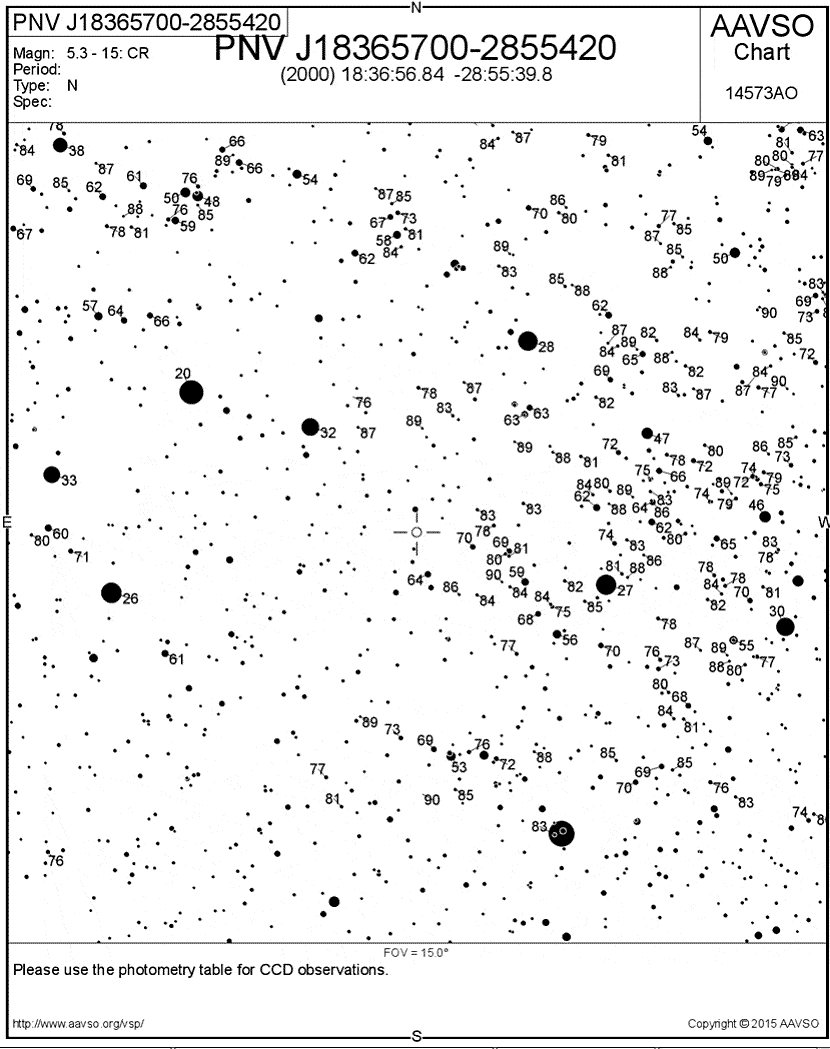
 Usually at 4am I'm watching the backs of my eyelids, but recent events prompted me to step outside after heeding nature's call at that time. Recent reports of a "bright" nova in the constellation Sagittarius motivated me to try capturing it with camera and tripod. It was clear (and cool, given that the daytime highs are in the mid-80s these days), so quickly set up. I used an 85mm Canon lens at F/2 and took a few exposures at 3.2 and 5 seconds - 7 frames total, only 28 seconds total exposure. I kept the exposures short to reduce trailing and stacked the untracked images to make the image shown here. The field barely fits the asterism of "The Teapot" into the frame. In case you don't see it, I've included lines and labels in the right image. The darkening or vignetting in the corners results from shooting with the lens nearly wide open, and is to be expected, especially in a bright sky like we have in town.
Usually at 4am I'm watching the backs of my eyelids, but recent events prompted me to step outside after heeding nature's call at that time. Recent reports of a "bright" nova in the constellation Sagittarius motivated me to try capturing it with camera and tripod. It was clear (and cool, given that the daytime highs are in the mid-80s these days), so quickly set up. I used an 85mm Canon lens at F/2 and took a few exposures at 3.2 and 5 seconds - 7 frames total, only 28 seconds total exposure. I kept the exposures short to reduce trailing and stacked the untracked images to make the image shown here. The field barely fits the asterism of "The Teapot" into the frame. In case you don't see it, I've included lines and labels in the right image. The darkening or vignetting in the corners results from shooting with the lens nearly wide open, and is to be expected, especially in a bright sky like we have in town.Nova are caused by mass transfer in a binary star system. Hydrogen gas collects on the surface of an aged white dwarf, and when enough fresh fuel transfers, a runaway nuclear reaction takes place, resulting in a huge brightness increase - in this case about 10 magnitudes, or 10,000 times brighter than the progenitor star.
Of course these things don't last long, so get a glance while you can. Current light curves show it right on the verge of naked-eye visibility from a dark site, but will require binoculars most everywhere else. Using the "official" AAVSO map at left, you can track the brightness yourself, using nearby comparison stars where the brightness is listed on labeled stars without decimal points.
Have fun and get out there!















No comments:
Post a Comment